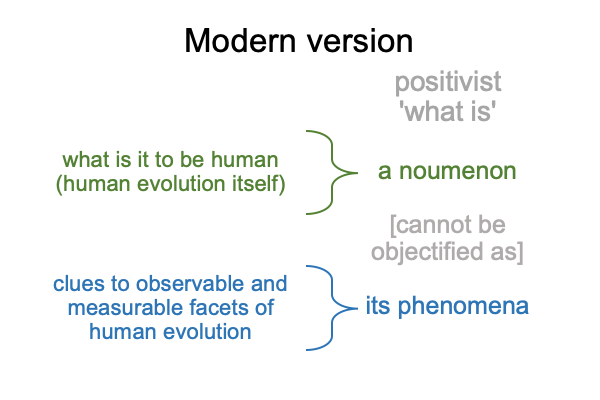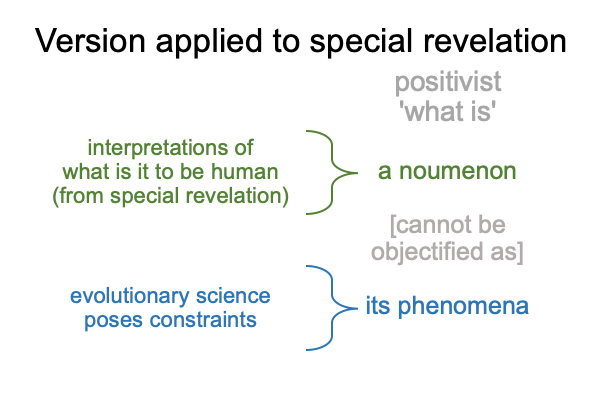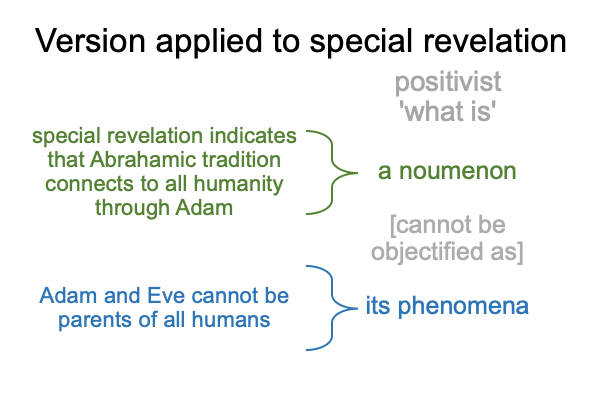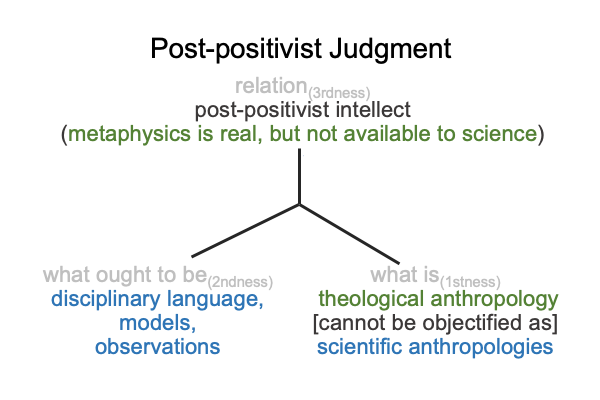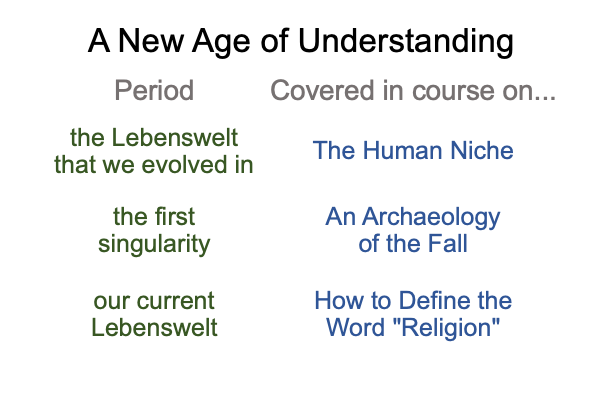Looking at Jeff Hardin’s Essay (2019) “Biology and Theological Anthropology” (Part 2 of 15)
0008 In order to appreciate how science and metaphysics mirror one another, I turn to Comments on Jacques Maritain’s Book (1935) Natural Philosophy (available at the smashwords website under the Empirio-schematic series).
Science is successfully born at the start of the modern age, with the formulation of the Positivist’s judgment.
What is a judgment?
A judgment is a relation between ‘what is’ and ‘what ought to be’. When the elements are assigned to Peirce’s categories, the judgment becomes actionable. Actionable judgments unfold into category-based nested forms.
0009 Here is a diagram of the Positivist’s judgment.
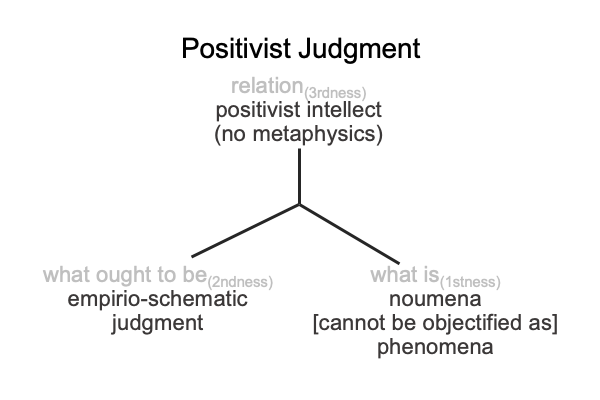
0010 The positivist intellect, the relation, insists on a rule: No metaphysics. Surely, this is one reason why scientific inquiry into human evolution grates against theological anthropology.
What ought to be is an empirio-schematic judgment.
Disciplinary language (relation) brings observations and measurements (what is) into relation with mathematical and mechanical models (what ought to be).
0011 What is what is?
What is has the structure of Peirce’s secondness. The category of secondness is the realm of actuality. Secondness consists of two contiguous real elements.
Here, the two real elements, a noumenon and its phenomena, belong to firstness, the realm of potential. The noumenon, the thing itself, has the potential of capturing the attention of the positivist intellect. Its phenomena, observable and measurable facets of the thing, have the potential of activating an empirio-schematic judgment.
The contiguity is most curious. I place the contiguity in brackets. A noumenon [cannot be objectified as] its phenomena.


